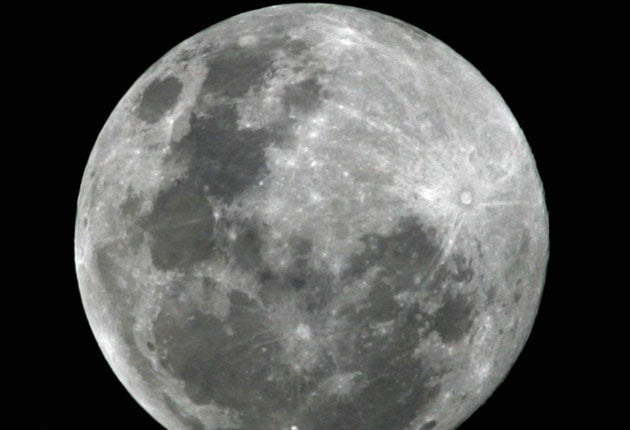Evidence of water found on moon

Scientists announced tonight that they have discovered “buckets” of water on the Moon following the analysis of data from a spacecraft that was deliberately crashed into a lunar crater last month.
The researchers said the evidence for the existence of significant bodies of water ice hidden in polar craters on the Moon is “definitive” and that the total quantities could be big enough to support a permanently-manned lunar base.
It is the first time that the US National Aeronautics and Space Administration (Nasa) has been so categorical about the discovery of water on the Moon. Previous studies had only suggested that the presence of water might be possible and then only in trace amounts.
However, a painstakingly detailed analysis of the data from the LCROSS spacecraft, which was deliberately crashed into the Cabeus crater near the Lunar South Pole, has revealed a definitive chemical signature of water vapour in the plume of dust and debris that was released on impact.
In just one crater, the team estimates that there was at least 100 kilograms of water, enough to fill a dozen, two-gallon buckets. If similar amounts of water exist in other polar craters permanently shaded from sunlight there could be enough water available on the Moon to be used as drinking water for a lunar base – or used as a source of rocket fuel.
Anthony Colaprete, the principal scientist of LCROSS (the Lunar Crater Observation and Sensing Satellite), said that the “eureka moment” came when the team saw a spectroscopic line indicating the presence of the OH water molecule, which could only exist if water was present in the crater.
“What we found was indeed water...We vetted it, vetted it, vetted it, vetted it and vetted it some more as a team...I’m pretty impressed by the amount of water we see in this small, 20-metre crater,” Dr Colaprete said at a press briefing from Nasa’s Ames Research Centre in California.
“It’s safe to say it’s not a frozen lake with a perfectly frozen surface. It was probably mixed in with the surface. It would be an interesting place to walk around,” Dr Colaprete said.
Mike Wargo from Nasa said: “We’ve discovered significant quantities of water in a permanently-shaded crater on the Moon. We’re not just talking of water on the Moon, but lots of water.”
When LCROSS was crashed into the Moon, it was expected to eject a visible plume of debris six-miles high that was supposed to have been visible from Earth. However, Nasa scientists said at the time that the absence of a visible plume did not mean that the mission was a failure.
Nasa’s Gregory Delory said that the discovery is one of the most exciting to be made in connection with lunar exploration. “If we find water in large enough amounts it could be used as a resource for human exploration,” Dr Delory said.
“Now we know there’s water there thanks to LCROSS we can go to the next set of questions. It’s a new picture of the Moon. It’s going to be a very exciting time,” he said.
One of the unresolved questions is how the water could have got to the Moon. One theory is that it arrived on a comet and never evaporated in the shaded polar craters where temperatures are minus 220C.
Another possibility is that the water arrived on a solar wind, which is a stream of ionised hydrogen gas. A third theory is that is was dropped by a molecular cloud, or dropped by ice-laden cosmic dust. It might even be terrestrial water kicked up from Earth in a gigantic asteroid impact.
Nasa estimates that there are 12,500 square kilometres of permanently-shadowed terrain on the Moon and if the top 1 metre of this area were to hold just 1 per cent by mass of water, this would still produce thousands of litres of water.
It is not the first time that spacecraft have crashed into the Moon. In 1998, Nasa's Lunar Prospector mission was deliberately crashed into a crater, which confirmed the presence of hydrogen, which may or may not have come from ancient stores of frozen water deposited in lunar craters over billions of years by passing comets.
Join our commenting forum
Join thought-provoking conversations, follow other Independent readers and see their replies
Comments
Bookmark popover
Removed from bookmarks